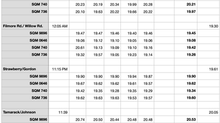Pluto Time
- Chuck Bueter
- Jun 30, 2015
- 3 min read
The New Horizons spacecraft will zip past Pluto and its moons on Tuesday, July 14, 2015, at 7:49 a.m. EDT. For much of the day the spacecraft will be out of communications as it gathers images and starts a series of data downloads. Without stopping, New Horizons then continues its journey into deep space.
Prior to flyby, you can submit your images of Pluto Time, which is your local time (near civil twilight) that has daylight brightness equivalent to noon on Pluto. For example, on June 30 in South Bend, IN, Pluto Time is 9:28 p.m. EDT. The brightness at 9:38 p.m. is equivalent to high noon on Pluto. Frankly, I thought it would be darker than that. Who knew? (Actually, NASA knew.) Check out the #PlutoTime for you site, take a photo then, and submit the image to NASA.
The fine folks at NASA Sun-Earth Days also present Small Worlds Week. They write,
From July 6-10 we will celebrate the smaller members of our solar system in preparation for the historic New Horizons Pluto flyby. From July 6-9, we will feature a new solar system small world each day including resources that were developed for classroom use:
July 6 - Comets
July 7 - Asteroids
July 8 - Icy Moons
July 9 - Dwarf Planets
Then, on Friday, July 10, we will have a cadre of planetary scientists from across the country standing by to answer your questions via Facebook and Twitter. So, get those questions ready! Why is Pluto not a planet? Did comets bring life to Earth? Are we in danger from Near Earth Asteroids? Can life exist in the cold, dark outer solar system? Follow us on Facebook, Twitter and the Sun-Earth Day 2015 website http://sunearthday.nasa.gov.
A schedule of NASA TV coverage for July 14 includes a 7:30 a.m. media briefing and a noon-3 p.m. panel discussion. For hands-on activities, see the Museum Alliance's Pluto For Youth Program. A 58-minute NASA video is at Year of Pluto... A free app to plot Pluto is from Sky Safari.
In South Bend, some of the SB150 Young Astronomers team have been taking images of Pluto with telescopes that are atop mountains in Chile. Can you find the planet in the images I took, the first being on June 17, 2015, as midnight approached and the second a couple of hours later into June 18? (Hint: it's near a small smudge that appears in the center of the second image, and it only moves a small distance.)


How can you tell which one is Pluto? Clyde Tombaugh discovered the distant planet in 1930 by using a blink comparator (here's a simulator), which stacked two similar images taken at different times and cycled back and forth between the images. The point of light that moves is not a star.
Pluto will be featured at AstroCamp the week of July 12-18, 2015, at YMCA Camp Eberhart in Three Rivers, MI.
If you want to make a 3D model of New Horizons, you can download New Horizons files for a 3D printer and take it to a library such as Studio 304 at St. Joseph County Public Library. A model appeared in the Michiana Astronomical Society's room during 2015 Science Alive.
Lastly, here's the answer to Where's Pluto?

Added July 3, 2015:
I made a movie of another sequence of Pluto images at Pluto: 3 hours of 248-year orbit.
See my other recent blog posts with the Pluto tag.









































